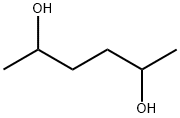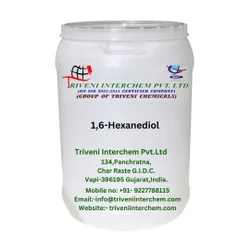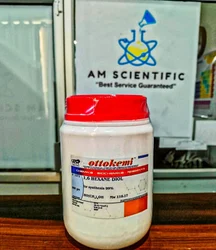1,6-Hexanediol
Synonym(s):1,6-Hexanediol;Hexamethylene glycol
- CAS NO.:629-11-8
- Empirical Formula: C6H14O2
- Molecular Weight: 118.17
- MDL number: MFCD00002985
- EINECS: 211-074-0
- SAFETY DATA SHEET (SDS)
- Update Date: 2025-12-17 09:49:44

What is 1,6-Hexanediol?
Chemical properties
white waxy flakes
The Uses of 1,6-Hexanediol
1,6-Hexanediol is used in polymer synthesis such as polyester, polyurethane and nylon. It is used as an intermediate to adhesives, acrylics and dyestuffs. Further, it is employed in gasoline refining and pharmaceutical production.
The Uses of 1,6-Hexanediol
Solvent, intermediate for high polymers (nylon, polyesters), coupling agent, coil coating.
The Uses of 1,6-Hexanediol
1,6-Hexanediol can be used for a variety of applications such as:
- a structure-directing agent for the synthesis of ZSM-5 zeolite
- a solvent for titanium tetraisopropoxide to form titanium oxide (TiO2) nanocrystals
- a phase change material in combination with lauric acid for thermal energy storage applications
What are the applications of Application
1,6-Hexanediol is a useful alcohol for proteomics research
Definition
ChEBI: A diol that is hexane substituted by hydroxy groups at positions 1 and 6.
Production Methods
1,6-Hexanediol is produced industrially by the catalytic hydrogenation of adipic acid or of its esters. Mixtures of dicarboxylic acids and hydroxycarboxylic acids with C6 components formed in other processes (e.g., in cyclohexane oxidation) are also used. Esterifification of "distillation heavies" with lower alcohols is often carried out before hydrogenation. The acids are hydrogenated continuously at 170-240 ℃ and at 15.0-30.0 MPa on a suitable catalyst either in a trickle-flflow (downflflow) or a bubble-flflow (upflflow) fifixed-bed reactor. The reactor temperature is controlled by circulating part of the reactor discharge. The hydrogen required for the hydrogenation is fed together with the recycle gas through the recycle gas compressor to the reactor. Side products of the synthesis are alcohols, ethers, diols, and esters. Pure 1,6-hexanediol is obtained by fractional distillation of the crude reactor discharge. For the hydrogenation of dicarboxylic acids, catalysts containing cobalt, copper, or manganese are suitable. For the hydrogenation of esters, catalysts such as copper chromite or copper with added zinc and barium are used as "full catalysts" or on inert carriers. Ruthenium, platinum, or palladium on inert supports can also be used. Gas-phase hydrogenation of esters of adipic or 6-hydroxyhexanoic acid can be carried out at 1-7 MPa. Both acids and esters also may be hydrogenated using suspended catalysts. Oligomeric esters of the product diol and adipic acid can also be hydrogenated.
Synthesis Reference(s)
Tetrahedron Letters, 34, p. 243, 1993 DOI: 10.1016/S0040-4039(00)60557-9
Hazard
Toxic by ingestion.
Storage
Store at RT. 1,6-Hexanediol in the form of flflakes or as a solidifified melt is stored and shipped in barrels. It is transported as a melt in stainless steel containers, tank trucks, or tank cars.
Purification Methods
Fractionally crystallise it from its melt or from water. Distil it in vacuo. [Beilstein 1 IV 2556.]
Properties of 1,6-Hexanediol
| Melting point: | 38-42 °C (lit.) |
| Boiling point: | 250 °C (lit.) |
| Density | 0.96 |
| vapor pressure | 0.53 mm Hg ( 20 °C) |
| refractive index | 1.457 |
| Flash point: | 215 °F |
| storage temp. | Store below +30°C. |
| solubility | H2O: 0.1 g/mL, clear, colorless |
| form | Waxy Flakes |
| pka | 14.87±0.10(Predicted) |
| color | White |
| PH | 7.6 (900g/l, H2O, 20℃) |
| explosive limit | 6.6-16%(V) |
| Water Solubility | 500 g/L |
| Sensitive | Hygroscopic |
| λmax | λ: 260 nm Amax: 0.1 λ: 280 nm Amax: 0.1 |
| Merck | 14,4690 |
| BRN | 1633461 |
| CAS DataBase Reference | 629-11-8(CAS DataBase Reference) |
| NIST Chemistry Reference | 1,6-Hexanediol(629-11-8) |
| EPA Substance Registry System | 1,6-Hexanediol (629-11-8) |
Safety information for 1,6-Hexanediol
| Signal word | Warning |
| Pictogram(s) |
 Exclamation Mark Irritant GHS07 |
| GHS Hazard Statements |
H315:Skin corrosion/irritation H319:Serious eye damage/eye irritation H335:Specific target organ toxicity, single exposure;Respiratory tract irritation |
| Precautionary Statement Codes |
P280:Wear protective gloves/protective clothing/eye protection/face protection. P302+P352:IF ON SKIN: wash with plenty of soap and water. P304+P340:IF INHALED: Remove victim to fresh air and Keep at rest in a position comfortable for breathing. |
Computed Descriptors for 1,6-Hexanediol
| InChIKey | XXMIOPMDWAUFGU-UHFFFAOYSA-N |
1,6-Hexanediol manufacturer
CEFA CILINAS BIOTICS PVT LTD
Triveni Interchem Private Limited (Group Of Triveni Chemicals)
New Products
4,4-Difluoropiperidine hydrochloride tert-butyl 9-methoxy-3-azaspiro[5.5]undecane-3-carboxylate Indole Methyl Resin N-Isopropylurea N,N-Dicyclohexylcarbodiimide(DCC) MELDRUMS ACID 5-METHYLISOXAZOLE-4-CARBOXYLIC ACID Magnessium Bis glycinate Zinc ascorbate 1-bromo-2-butyne 2-acetamidophenol 9(10H)-anthracenone Erythrosin B, 4-Piperidinopiperidine 2-((4-morpholinophenylamino) (methylthio) methylene) malononitrile 2,4-dihydroxybenzaldehyde 3-(4-morpholinophenylamino)-5-amino-1H-pyrazole-4-carbonitrile Methyl 2-methylquinoline-6-carboxylate 2,6-dichloro-4-nitropyridine 4-Bromo-2-chlorobenzonitrile 2-(benzylamino)acetic acid hydrochloride 4-(tert-Butoxycarbonylamino)but- 2-ynoic acid 3,4-dihydro-2H-benzo[b][1,4]dioxepine 1-Phenyl-1-cycloprppanecarboxylicacidRelated products of tetrahydrofuran








You may like
-
 1,6-Hexanediol CAS 629-11-8View Details
1,6-Hexanediol CAS 629-11-8View Details
629-11-8 -
 Solid 1,6-Hexanediol, DrumView Details
Solid 1,6-Hexanediol, DrumView Details
629-11-8 -
 1 6 Hexanediol 99%View Details
1 6 Hexanediol 99%View Details
629-11-8 -
 1-6 HEXANEDIOL ( CAS NO - 629-11-8 )View Details
1-6 HEXANEDIOL ( CAS NO - 629-11-8 )View Details
629-11-8 -
 1,6-Hexanediol Cas No. 629-11-8, Industrial GradeView Details
1,6-Hexanediol Cas No. 629-11-8, Industrial GradeView Details
629-11-8 -
 1-6 HexanediolView Details
1-6 HexanediolView Details
629-11-8 -
 1-6 Hexane DiolView Details
1-6 Hexane DiolView Details
629-11-8 -
 Technical Grade 1,6-HexanediolView Details
Technical Grade 1,6-HexanediolView Details
629-11-8
